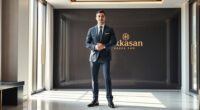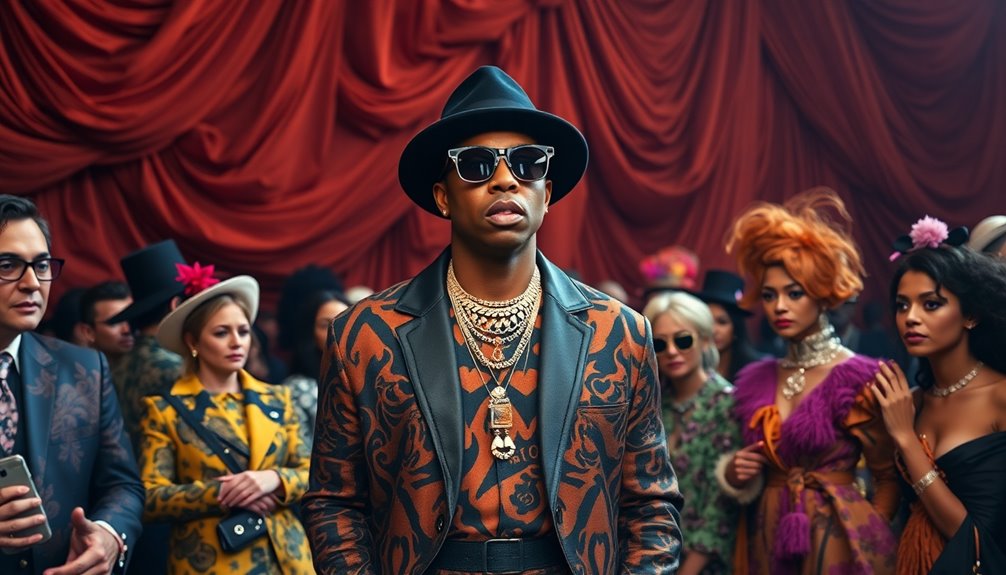After acquiring L’Oreal, De Meo is strategically aiming to boost growth by increasing leverage. He plans to borrow at favorable interest rates, funding new product lines, marketing, and acquisitions to accelerate expansion without diluting ownership. This approach leverages the company’s strong market position and resilience. If you want to discover how this strategy could reshape L’Oreal’s future and impact investor returns, there’s more to explore below.
Key Takeaways
- De Meo plans to increase L’Oreal’s leverage to fund growth initiatives and acquisitions.
- He aims to leverage low-interest debt markets to finance strategic investments.
- The strategy focuses on optimizing capital structure for higher long-term returns.
- De Meo’s leverage move is driven by confidence in L’Oreal’s strong market position.
- The goal is to accelerate expansion while managing debt sustainability and financial flexibility.

After acquiring a stake in L’Oreal, De Meo is now focusing on increasing leverage to fund further growth initiatives. This move signals his intention to maximize the investment’s potential by leveraging borrowed capital to accelerate expansion plans. You should understand that this approach aims to amplify returns without immediately diluting ownership stakes. By raising debt, De Meo positions himself to invest more aggressively in new product lines, marketing campaigns, and potential acquisitions.
De Meo boosts leverage to fund aggressive growth, expanding L’Oreal without immediate ownership dilution.
This strategy isn’t without risks, but De Meo’s confidence in L’Oreal’s strong brand portfolio and market position supports his decision. You might see him as balancing on a tightrope—using debt to fuel growth while carefully managing debt levels to avoid over-leverage. His focus is on optimizing the company’s capital structure to generate higher returns, especially as consumer preferences continue to evolve globally. He believes that by increasing leverage, L’Oreal can seize new market opportunities faster than competitors who rely solely on equity financing.
De Meo’s plan involves tapping into favorable debt markets, taking advantage of low interest rates to secure funding at manageable costs. You should expect him to work closely with financial advisors to structure debt that aligns with L’Oreal’s cash flow projections. His goal is to keep debt levels sustainable, ensuring the company maintains its credit ratings and financial flexibility. This move is also strategic in positioning L’Oreal for future acquisitions, where leverage can be used to finance deals quickly, giving the company an edge in an increasingly competitive landscape.
Ultimately, De Meo’s push for higher leverage indicates a proactive stance toward growth. You’ll see him prioritize strategic investments that can generate substantial returns, with an eye on long-term value creation. His approach reflects a confident assessment of L’Oreal’s resilience and market strength, and he’s betting that the benefits of increased leverage will outweigh potential risks. As he navigates this financial strategy, he aims to transform L’Oreal into a more dynamic, aggressive player that can adapt swiftly to changing consumer trends and global economic conditions.
Frequently Asked Questions
What Is De Meo’s Planned Timeline for Increasing Leverage?
You can expect De Meo to aim for a gradual increase in leverage over the next 12 to 18 months. He plans to prioritize integrating the L’Oreal acquisition first, then strategically raise debt levels once operational synergies are realized. His approach involves balancing growth ambitions with maintaining financial stability, ensuring leverage growth doesn’t compromise credit ratings or long-term performance. This phased plan helps optimize value while managing risks effectively.
How Will the L’Oréal Acquisition Impact De Meo’s Long-Term Strategy?
The L’Oréal acquisition will shift your long-term strategy toward expanding your portfolio and strengthening market presence. You’ll focus on integrating new brands, leveraging synergies, and boosting innovation to stay competitive. This move encourages you to pursue growth through strategic acquisitions, while also optimizing operational efficiencies. Over time, you’ll prioritize sustainable growth, balancing leverage with investment, and aligning your objectives to maximize the value created from this significant expansion.
What Risks Are Associated With Higher Leverage Post-Acquisition?
Like sailing into stormy seas, higher leverage post-acquisition risks increased financial strain and reduced flexibility. You might face difficulties meeting debt obligations if cash flows weaken, and your credit ratings could decline, making future borrowing more expensive. This heightened risk also leaves you vulnerable to economic downturns, potentially impacting growth plans. Staying cautious and managing debt prudently helps you avoid these pitfalls and guarantees smoother navigation through post-acquisition waters.
How Does This Leverage Target Compare to Industry Standards?
You’ll find that this leverage target is slightly higher than typical industry standards, which usually range around 2 to 3 times EBITDA. While higher leverage can boost returns, it also increases financial risk, especially if earnings decline or market conditions worsen. Keep in mind, maintaining a balance is vital; too much debt could strain cash flow and limit growth opportunities, so carefully monitor your leverage levels relative to industry benchmarks.
What Are De Meo’s Plans for Debt Management and Repayment?
Think of De Meo as a skilled captain steering choppy waters; he plans to manage debt carefully by prioritizing repayments and maintaining strong cash flow. He aims to reduce leverage gradually, using proceeds from asset sales and operational improvements, ensuring the company stays afloat without risking overreach. This strategic approach aligns with industry best practices, helping him steer the company towards sustainable growth while managing financial risks effectively.
Conclusion
Like a skilled navigator adjusting sails after a storm, De Meo aims to steer the company’s leverage with precision following the L’Oréal acquisition. You can imagine him as a steady captain, balancing the ship’s weight to keep it steady on the vast financial seas. With focused resolve, he’s charting a course through turbulent waters, confident that, with measured control, the voyage will lead to calmer waters and brighter horizons ahead.









